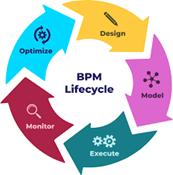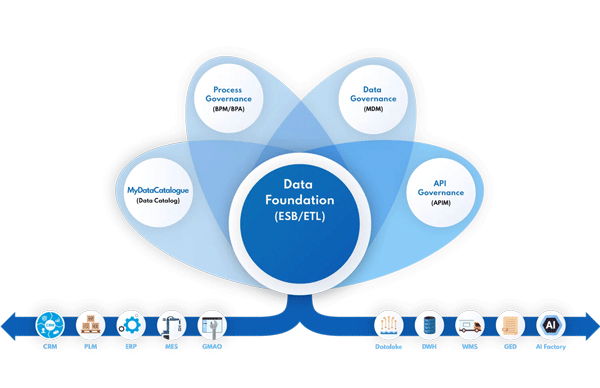Introduction
BPA/BPM refers to the set of tools and methods that enable companies to computerize and optimize their business processes ("an organized sequence of activities that together create value for customers") in record time.
It's not just about efficiency tools, but another means for companies to stay competitive, a method focused on their processes.
#BPM #BPA #ABPM
Vos enjeux
- Saving time by reducing the need for manual work on low-value-added tasks and freeing up valuable resources, eliminating tedious data entry and manual calculations, which can be extremely time-consuming.
- Optimizing data quality and eliminating errors.
- Streamlining data management and making them accessible at all times. Once the data is stored in a secure and centralized location, access to them is facilitated.
- Generating efficiency and productivity gains.
- Reducing costs and becoming more competitive in the long term.
- For the IT department, maintaining control and the value of the IS by proposing the implementation of business processes that connect humans, data, and interact with various applications across the company's services.
Opera's offer
Through a BPM tool, an accelerator for the implementation of human processes, the company enhances its processes on multiple levels:
Visibility: The description of processes will enable everyone within the company to better understand customer expectations and contribute to them more effectively.
Agility: Task automation and exception handling through human interventions will accelerate process execution and increase teams' processing capacity.
Traceability: Implementation of tracking indicators and operation history : Who? When? Why? How?... will allow management to better monitor the progress of cases and, most importantly, be able to communicate any anomalies or delays in execution.
Continuous Improvement / Profitability: BPM will enable better utilization of existing IT infrastructure while addressing new needs. This will make it possible to quickly adapt processes managed by the information system to any organizational changes or the launch of a new product.
OPERA has been accompanying you for over 17 years on the method and tools for implementing BPA/BPM.
The use cases may vary, but the methodology and best practices are common.

According to Gartner, 67% of BPM projects were implemented in less than six months, and in 55% of cases, the return on investment was between €100,000 and €500,000 (source: Gartner).
According to Fortune Business Insights, the BPM market is expected to grow at a compound annual growth rate (CAGR) of 12% to reach $26.18 billion by 2028.
Is OPERA accompanying you on the next big innovation in business process automation?
A recent research manifesto introduced the vision of AI-enhanced Business Process Management (ABPM), where BPM systems are infused with AI to continuously adapt and enhance a set of business processes in relation to one or more performance indicators.
The public launch of generative AI is certainly a game-changing strategy for business processes. In its current form, it holds promising potential for enhancing workflows by streamlining, automating, and improving each step.
Here are a few examples of how it achieves this:
Quicker Automation: Generative AI reduces technical barriers and speeds up the discovery and development of processes. How? Users simply need to write prompts to create processes, automations, and other components.
More Effective Automation: Generative AI makes it easier to access and analyze data to gain more insights. You can prompt it to extract specific information you're looking for faster than if you were to find it yourself.
Simplified Automation: Generative AI helps you automate more complex and nuanced workflows while preserving quality and minimizing disruptions. For example, you can ask generative AI to generate the best workflow for a particular case.
Our preferred solution partner
Opéra has chosen to integrate the Blueway Process Governance solution for its performance, BPM/ESB interoperability, and ease of use through drag-and-drop form entry screens that your employees use to enter, view data, or perform a task in a BPM process).
No code! Screen generation in Blueway is 100% visual and intuitive.


